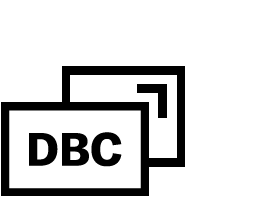Rebranding is the toughest decision in Brand Strategy
This will not be one of those articles giving you "5 keys to an easy rebrand!". Rebranding isn’t easy. Your brand strategy will be a forever changing landscape, and the tough decision to restart the brand won't come quickly, or easily.
Let’s evaluate why your organization has to rebrand. You’re losing. Losing money, opportunities, market share or perhaps you’ve just lost a legal judgement. The process will be much different than when you branded for the first time. Let’s compare the two.
The takeaway? Rebranding is going to be rough.
Having a plan before you start the process can alleviate lots of stress and chaos. We’ve compiled some of the questions you should be asking yourself and your team along the way.
WHEN IS THE RIGHT TIME TO REBRAND?
This answer is often the trickiest. The only right answer would be “before you absolutely need it.” A rushed rebrand can spell disaster, as the phase most often skipped in the interest of time is market testing. You may not always have control over when you commit to rebranding, (a judge’s orders or a VC’s suggestion may be the impetus, for instance) but aim to monitor your brand for signs that it is not connecting for growth. These signs include:
- A decreasingly engaged target audience
- A competitor gaining market share
- Poor customer survey results
WILL MY NEW BRAND ALIENATE MY CURRENT CUSTOMERS?
It’s possible. The goal of any rebrand is to minimize the negative impact on current customers/clients (an effective relaunch plan helps to address this). However, you may need to shed some of your audience to attract a new one. For example, if you have fierce brand loyalty among baby boomers and you’re looking to expand to a younger demographic, you may need to change your brand in a way that loses some of the older audience.
Thanks for excluding 4c hair from your commercial, it's nice to know that even though I have been using your products the majority of my life, your company doesn't even care to include people with my type of hair. You talk about inclusion but ignore your majority customer base.I won't be using your skin care, hair care, or makeup line since you don't think people who look like me and have hair like me should be featured in your commercials.
Shea Moisture later issued a strongly worded apology and pulled the new ad.
HOW DO I CHOOSE THE RIGHT PARTNER TO DRIVE OUR REBRAND?
Don’t rebrand in-house. Yes, you may have a marketing and design team, but a rebrand presents a rare opportunity for the market to see and hear you differently. Most in-house teams can’t provide those fresh eyes and ears you need for success. (Uber’s 2016 rebrand comes to mind)
At the ground level, your partner should be able to fully understand your audience(s) and plan to form an emotional connection between them and your brand.
Your partner should develop a timeline for all the different phases of the rebrand process. This timeline will ensure that the internal players (C Suite, Brand/Marketing/Sales teams) have the time to focus on running the existing brand until the new brand is launched. Avoid becoming stagnant in the three to six months it will take to get to re-introductions.
Most importantly, your partner should stick with you after brand launch. Your new brand will not be absolutely perfect out of the box. You will have forgotten that an HR template needs to be update, those umbrellas you give clients as gifts display the old logo, and your internal design team could still have questions on how to use the brand. A true partner will have anticipated these occurrences in their scope of work and will be ready to handle them. You’ll be busy enough promoting your new brand.
Looks like we made it through some of the tough aspects of the rebranding conversation, and you may notice we didn’t even speak about design. We’ll tackle that next time.


